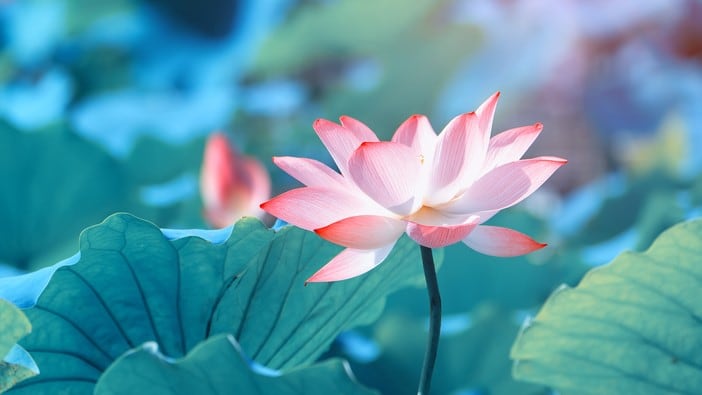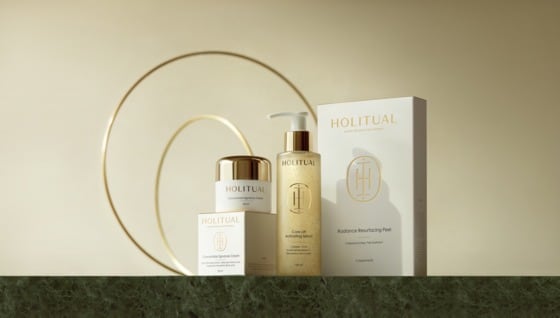1 – Natural and organic beauty one of the key drivers of Indonesia’s personal care market
The Indonesian consumers’ demand for natural or organic beauty products will continue to be a significant driver of the country’s personal care industry.
According to research, Indonesia’s personal care market will experience the highest growth within the next five years.
“This is simply because of our population. We have some 270 million people and the middle-income population is doubling every year. We have purchasing power and our society will consume more, especially in terms of personal care,” said Kilala Tilaar, corporate director of creative and innovation of the Martha Tilaar Group.
He added that research has shown that Indonesian consumers tended to prefer natural, organic and eco-friendly products.
“Unfortunately, Indonesia is the second biggest exporter of plastic. The younger generation is aware of the dangers of plastic waste. Products that are organic, natural or sustainable will answer the current needs of this millennial generation.”
2 – Five mega-trends that will affect China’s beauty industry – Insights from Dow
Dow believes there are five mega-trends have the potential to create the opportunities that can propel the growth of China’s personal care industry.
Jennifer Liang, Greater China commercial manager for home and personal care said: “We see big areas of growth which will take shape in the next several years.”
The first mega-trend the company has observed is the rise of the middle-class.
“The growing middle class globally translates into more disposable income creating more market potential and this will create a new need for products that offer new benefits at more affordable costs,” explained Liang.
This would then lead to the second trend, which is increasing urbanisation. This will contribute to urban pollution and drive consumers to seek products with anti-pollution properties.
“With 68% of the world’s population predicted to live in urban areas by 2050, consumers will seek more products that protect them from external aggressors.”
She elaborated: “The flood of people moving into urban areas will create a growing demand for products that protect and revive our skin from the urban environment, leading companies to invest in efficient skin health and skin protection technology.
3 – Minimalism momentum: South Korean consumers turning their back on complex beauty routines
The rise of minimalism is creating opportunities for beauty companies to create simple products to cater to South Korean consumers that are looking for more straightforward beauty routines.
The minimalist trend is driven by young urbanites who are beginning to embrace a simpler lifestyle to combat everyday stress.
“A growing number of younger consumers have started to embrace a minimalist lifestyle to give themselves space to breathe as well as take a rest from anything that may be pressurising, even if just slightly,” said Hwa Jun Lee, senior beauty and personal care analyst at Mintel.
These consumers, he continues, are happier when buying ‘just the essentials’.
“Instead of purchasing many products at once, they tend to buy small, portable and easy-to-use products with reasonable price tags.”
Lee also attributes the rise of the minimalist lifestyle to the Honjok or ‘loner’ tribe.
He explained that a Honjok was a person who preferred to work, eat and enjoy leisurely activities alone.
“More South Koreans think it is better to enjoy life alone than to be stressed out by other people,” Lee added.
4 – South Korea hair care: Natural ingredients and innovation driving sector growth
The South Korean haircare market is continuing to see dynamic growth underpinned by the natural trend and the South Korean consumer’s willingness to experiment with new innovations.
According to GlobalData research, the South Korean hair care market, not including the professional sector, is expected to grow at a rate of 2.3% from 2017 to 2022.
Like in other sectors, the natural and organic trend continues to remain an overarching trend, said Sumit Chopra, director of research and analysis.
Speaking at in-cosmetics Korea this year, he added that the trend continued to persist because of the focus on healthcare and the perception that natural and organic products have health benefits.
“Our consumer survey showed that slightly more than 50% reported that health is a key issue when it comes to purchasing for cosmetics and toiletries. So natural and organic products will continue to be something consumers feel connected to.”
5 – WATCH: Three ways China’s young consumers are changing the beauty landscape
The ever-changing demands and expectations of China’s younger consumers are changing the way international beauty brands cater to its demanding beauty market.
A report by Reuter Communications has uncovered how changing the mindset of younger consumers are impacting the tastes and expectations of China’s young beauty consumers.
Researchers spoke to several hundred beauty consumers across first-tier cities in China to learn how brands can stay ahead of the rapidly changing consumer and stay ahead in this competitive arena.
6 – Halal beauty: How the thriving segment is reshaping Asia’s cosmetics landscape
Once a niche segment halal beauty is now affecting Asia’s personal care landscape in tremendous ways in terms of trends, opportunities and regulation.
Indonesia, for instance, has passed a law to make halal certification mandatory by October 2019.
“[This means] products must be certified according to the Indonesian halal certification process, which is different from the Malaysian certification process. That means that even Malaysian companies are now reformulating and asking for this new certification to adapt to Indonesia,” explained Florence Bernardin, founder of consultancy Information et Inspiration.
She added: “Indonesia wants to lead in halal certification by being the first country to be entirely halal. Indonesia’s size might make it the future leader of halal beauty.”
Despite being a smaller market, beauty companies such as K-beauty giant Amorepacific are investing in Malaysia for its halal expertise.
7— Japan’s hair care trends: Kao taps into demand for anti-ageing conditioners and more mild shampoos
Kao’s chemical division has created two new hair care solutions, which it believes taps into two of the most pressing demands from Japanese consumers – namely products with anti-ageing benefits and more mild properties.
Moe Yoshizawa, chemical business global, pharmaceuticals and toiletries, Kao Corporation, told CosmeticsDesign-Asia that its clients are increasingly asking for ingredients that can fulfil the demands of the anti-ageing hair care market.
Quartamin E-80K was launched 10 years ago as a replacement for behentrimonium chloride (BTAC) but Kao’s new research shows that it is an effective ingredient for anti-ageing hair conditioner.
Yoshizawa explained that creating an anti-ageing hair conditioner could be complicated. “To make this hair conditioner, volume and smoothness is both needed, but it’s hard to fulfil both criteria because, for example, if you have smoothness, there is less volume.”
Through a series of tests, the company found that Quartamin E-80K was superior to BTAC. Aside from giving hair a smooth texture, it is able to improve hair volume and hair bounce up to 25% and 20% respectively.
8 – WATCH: ‘Asian-nification’ of beauty – Why more traditional Asian ingredients are making their way into cosmetic formulations
Asia is a hub for beauty innovation, but it is also home various cultures with age-old remedies that are finding their way into modern personal care formulations.
As the link between health, wellness and beauty continue to strengthen, Asian consumers now see products with traditional ingredients as a holistic solution to their beauty concerns.
Sara Davina Soong, founder of Singapore-based beauty and wellness brand, Restoration Essence, believes Asian consumers are particularly receptive to such products.
“In South East Asia, there are many cultures and each has their own traditional beliefs. For instance, Chinese believe strongly in herbs. It is common in everyday life, like in herbal soups. That’s why we see many people seek comfort in traditional remedies,” she said.
Later we reach out to Hong Kong-based Nutri-Woods International, a personal care company guided by the theory of traditional Chinese medicine. We speak to Michael Kwan, market development director and international trade co-ordinator, about how the company blends traditional principles with modern scientific approach.
9 – China’s consumption upgrade pushing e-commerce giant Tmall to bring in more beauty
China’s growing appetite for cosmetic products is pushing e-commerce platform Tmall to bring in more beauty products to satisfy its consumers' demands.
Chen Xi, the general manager of Tmall Cosmetics, told CosmeticsDesign-Asia that Tmall’s beauty sales did exceedingly well last year.
“Tmall’s sales of beauty products jumped over 60% last year, surpassing the industry’s average growth rate of 37%. Online sales of cosmetics and personal care products rose 37% and 36% respectively in China. This is also ahead of the whole fast-moving consumer goods sector average of 32%.”
The company announced at its annual beauty summit in March that it expected international and domestic cosmetics brands to open 1,000 shops this year on its platform.
It revealed brands such as Tom Ford, Glamglow, Oriental Therapy, d-program, Primera and Barnangen have signed agreements to open flagship stores on Tmall this year.
10 — ‘Future of modern retail’: A.S. Watson targets Gen Z beauty consumers to drive growth
Health and beauty retailer A.S. Watson has stated that its Generation Z consumers are the “lynch-pin” of its current and future plans, with experiences as well as product range key to success.
According to the firm, this cohort will influence consumer spending more than any previous generations and will be the driving force of retail trends as the come of age.
“Generation Z is shaping up to have great spending power and they are the future of modern retail. It’s important to stay relevant to them, not only focusing on the products they want, but also the stories and experiences that goes with them.” said Malina Ngai, Group COO of the A.S. Watson Group.
Born between 1995 and 2009, Gen Z is currently the largest consumer segment. It accounts for 32% of the global population.
The company analysed its network of over 15,200s in 25 retail markets and recorded that Gen Z’s spending power rose by 23% in 2018.
Insights also showed that Gen Z were the biggest beauty spenders. On average 86% of Gen Z consumers were beauty shoppers and over 70% of their spending was on beauty.





